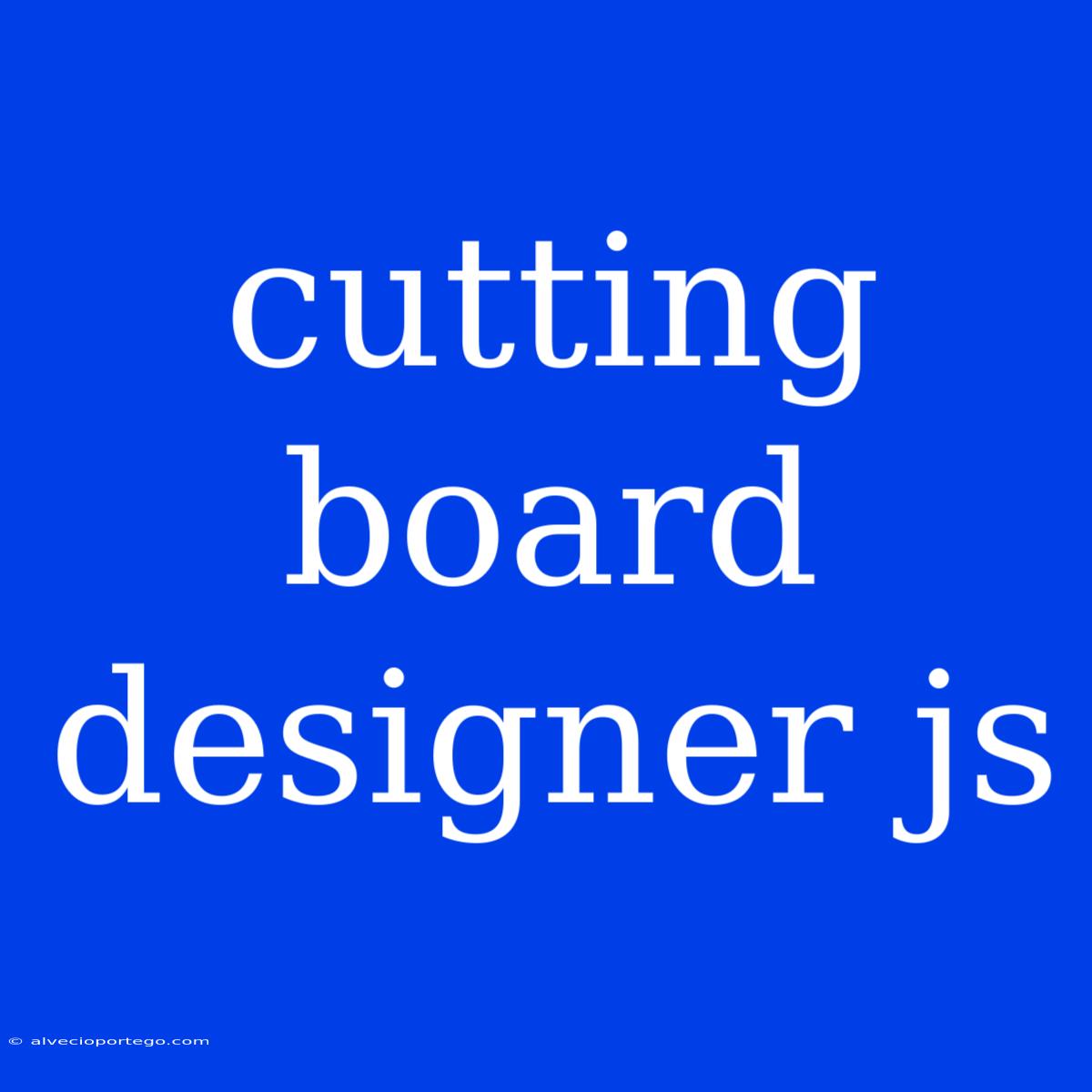Building Your Dream Cutting Board: A Guide to Designing with JavaScript
Cutting boards are more than just functional kitchen tools – they can be beautiful pieces of art that reflect your unique style. With a little JavaScript, you can bring your cutting board design visions to life!
This article will guide you through the process of creating a cutting board designer using JavaScript. We'll cover the fundamentals of front-end development, user interaction, and dynamic design.
Setting the Stage: HTML, CSS, and JavaScript
-
HTML Structure: Start with a basic HTML template. You'll need elements to represent your cutting board (a
divorcanvas), controls for customization (e.g., color pickers, dropdown menus), and a preview area to display the final result.Cutting Board Designer -
CSS Styling: Use CSS to style your elements. Make sure the cutting board preview has an appropriate size and appearance. You can use gradients or textures to simulate different wood types.
#board-preview { width: 400px; height: 200px; border: 1px solid #ccc; background-color: #f0e68c; /* Example wood color */ } -
JavaScript Logic: This is where the magic happens! Use JavaScript to handle user interactions and dynamically update the cutting board preview.
Core Functionality
-
Color Selection: Allow users to choose from a range of colors for the cutting board. You can use a color picker element or simple color swatches.
const colorPicker = document.getElementById('colorPicker'); const boardPreview = document.getElementById('board-preview'); colorPicker.addEventListener('change', (event) => { boardPreview.style.backgroundColor = event.target.value; }); -
Dimensions: Provide sliders or input fields for users to adjust the board's width and height.
const widthSlider = document.getElementById('widthSlider'); const heightSlider = document.getElementById('heightSlider'); const boardPreview = document.getElementById('board-preview'); widthSlider.addEventListener('input', (event) => { boardPreview.style.width = event.target.value + 'px'; }); heightSlider.addEventListener('input', (event) => { boardPreview.style.height = event.target.value + 'px'; }); -
Edge Styles: Let users select different edge styles (beveled, rounded, straight) for the cutting board. You can use different CSS classes to apply these styles.
const edgeStyleSelect = document.getElementById('edgeStyleSelect'); const boardPreview = document.getElementById('board-preview'); edgeStyleSelect.addEventListener('change', (event) => { boardPreview.classList.remove('beveled', 'rounded', 'straight'); boardPreview.classList.add(event.target.value); }); -
Additional Features:
- Wood Texture: Use image textures or CSS gradients to create realistic woodgrain patterns.
- Handle Design: Allow users to customize the handle shape and placement.
- Text Engraving: Implement a text input field to allow users to add personalized text to the board.
- Save & Share: Include functionality for users to save their designs or share them with others.
Tips and Best Practices
- Modular Code: Break down your JavaScript into separate functions for easier maintainability and organization.
- Event Listeners: Use event listeners to detect user interactions with the control elements.
- CSS Classes: Utilize CSS classes to apply different styles to the cutting board based on user choices.
- DOM Manipulation: Use JavaScript to dynamically update the HTML elements representing the cutting board preview.
- User Feedback: Provide visual feedback to users as they adjust settings.
Conclusion
Creating a cutting board designer with JavaScript is an exciting project that combines creativity with technical skills. By leveraging the power of front-end technologies, you can build an interactive and engaging tool for users to design their own personalized cutting boards.
Remember to start with a basic HTML structure, add CSS styling, and use JavaScript to handle user interactions and dynamically update the design. With a bit of imagination and code, you can create a cutting board designer that will delight users and showcase your web development prowess!

